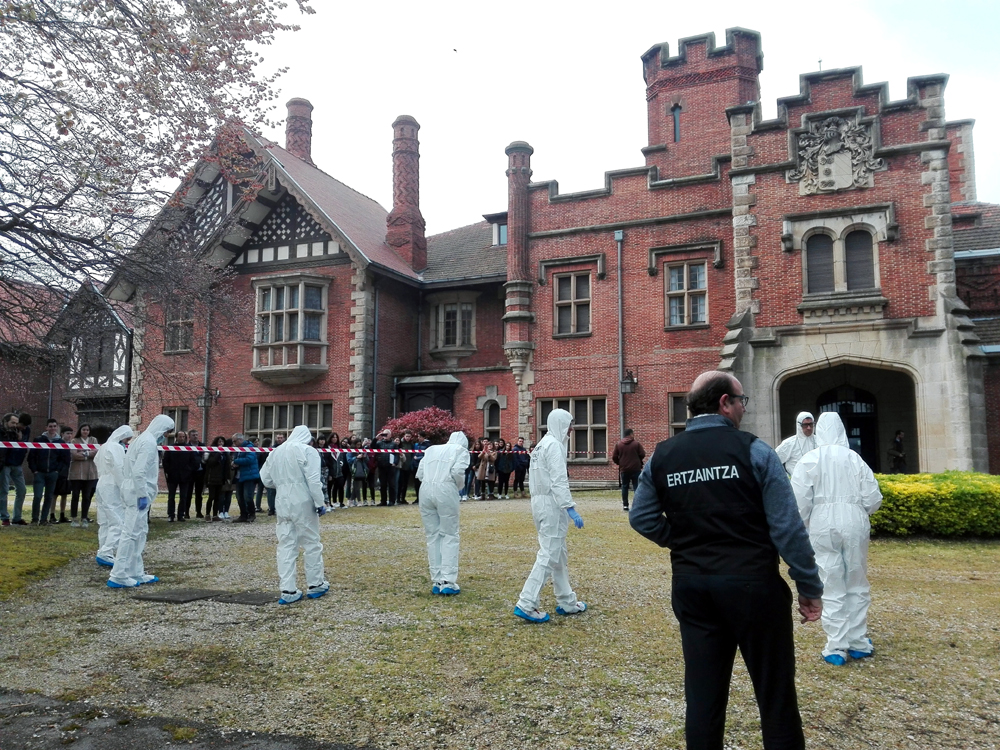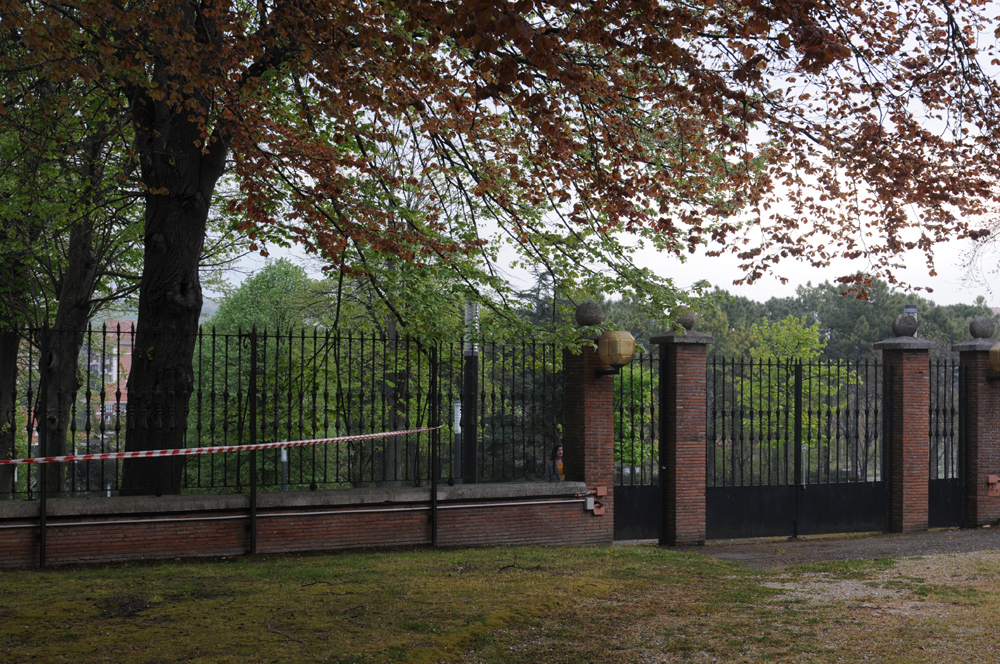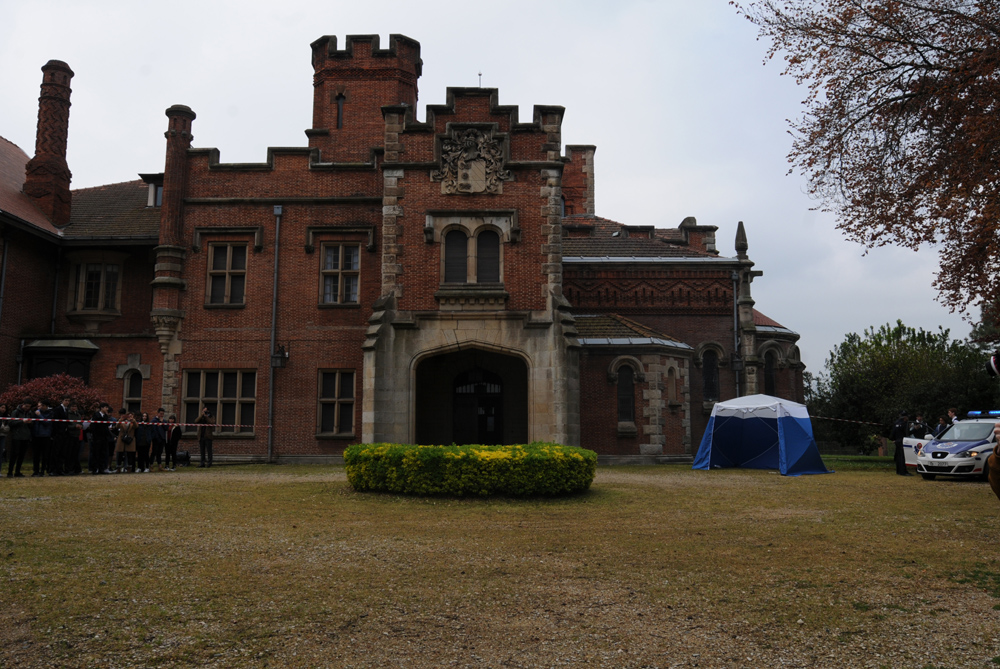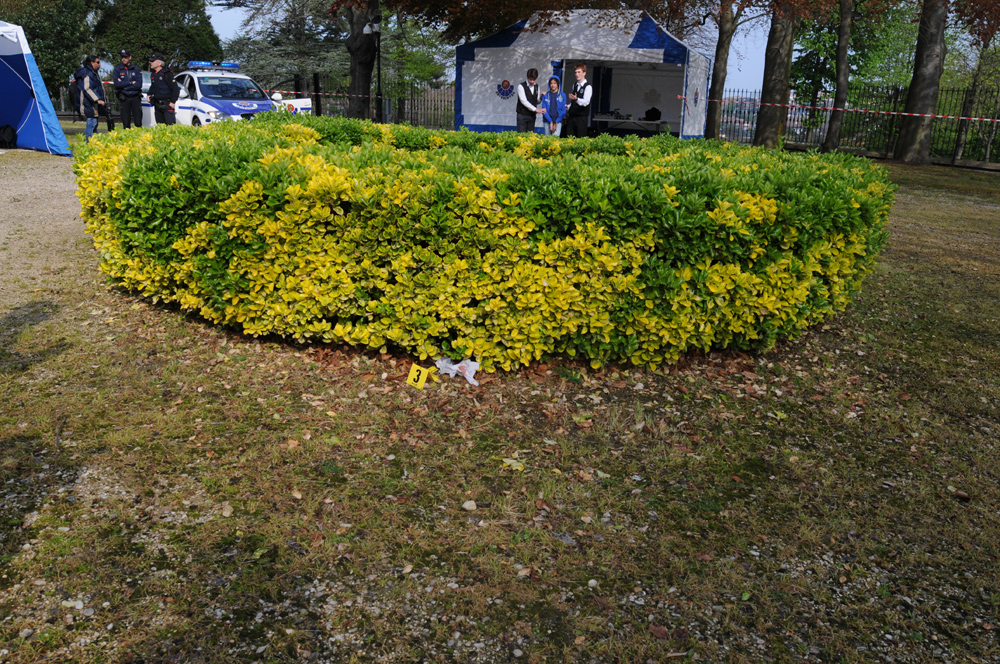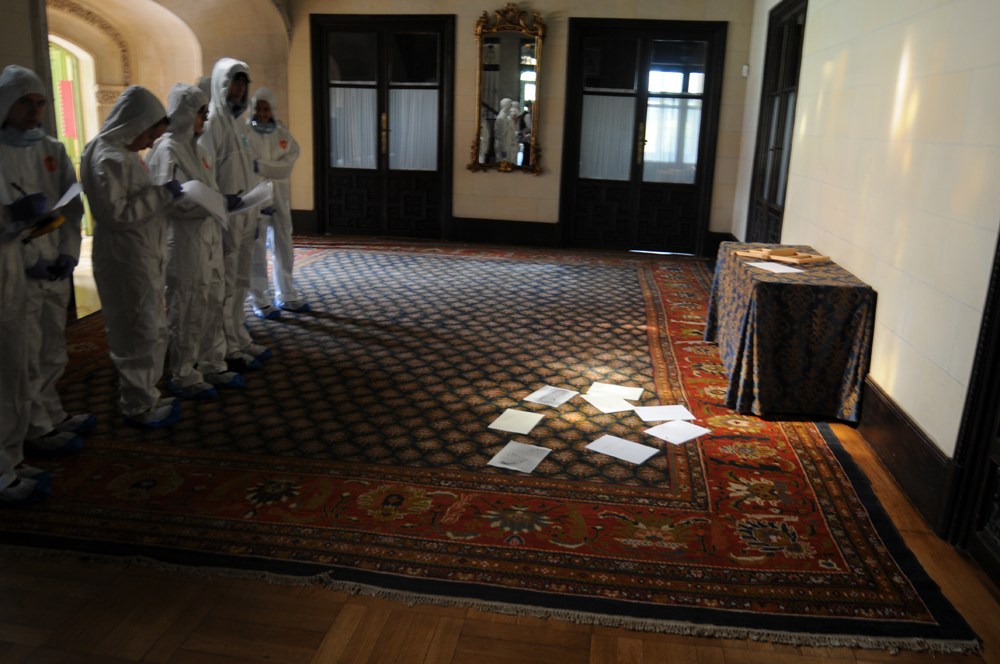A witness saw two people jump over the fence that surrounds the main entrance. Unfortunately they were unable to give a clear description as it all happened so fast. The only thing they can be sure of is that the person seen was carrying a bag in their hands. On approaching the palace the witness noticed that the main door was open and called the police.
A few minutes later a patrol car arrived with two police officers. Taking charge of the situation they decided to cordon off the area and informed their superiors.
Quickly the information was relayed to the Police who were on patrol nearby. Police officers were able to identify a man with a bag in the gardens surrounding the palace. When asked to open the bag, a sweater, a pair of shoes, some documents and the stolen painting were discovered.
The police officers listened to his explanation, however, not considering it true and due to the seriousness of the crime they proceeded to arrest the suspect, reading his rights and informing him that he had the right to be present at the scene of the crime while it was inspected. The detainee expresses his desire to be present for the inspection without the presence of a lawyer, complying with article 333 of the Criminal Procedure Law.
The detainee has a record of burglary (Record Number: 393448) , but told the agents that he had found the bag and that he knew nothing of its contents. Prior to the transfer to the crime scene, a preventative search was made of the detainee and his belongings were taken, among which a clock with a broken plastic wrist strap was found. When asked by the agents of its origin he stated that it belonged to him.
The forensic science unit were informed and made their way to the crime scene where they were to perform an inspection, reconstruct the criminal act, protect and preserve the area, as well as collect evidence and document their findings.


